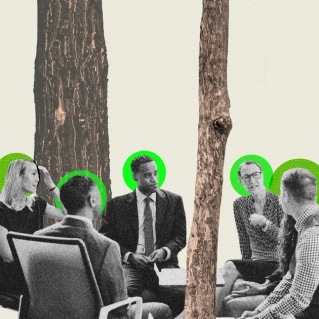Supply chain and the circular economy has been saved

Perspectives
Supply chain and the circular economy
Move circularity strategies into action by embracing connections across systems
Together, we can cultivate inclusive, regenerative growth that better balances what is good for people and planet.
Many organizations follow renewable guidelines to bolster their sustainability agenda. Despite these efforts, they still find themselves contending with the daily reality of an overstressed planet. Though renewable actions can extend the life span of a resource, there is still a clear endpoint in mind. “Circular” keeps a resource’s life span rolling forward. When created with circularity in mind, there isn’t a pre-determined endpoint to a resource’s usefulness. This distinction is gaining acceptance, and how well institutions are applying it may determine what kind of world there will be in 2050 and beyond. Rather than continuing the status quo, organizations can redefine their understanding of what is possible and architect a path toward a more sustainable future that gets better with each new generation.
Circular systems differ from today’s definition of renewable ones because they adhere to three recognized principles:
- Design out waste and pollution
- Circulate products and materials in a way that perserves value
- Regenerate nature
How can organizations transition from ambition to action on circularity? What principles can accelerate this shift?
To drive circularity, accept and leverage the complexities of the real world. In a vacuum, it isn’t hard to imagine circularity in food, power, or mobility. Although, in the real world, these and other systems touch, influence, and sustain one another, and they either drive or impede circularity together.
With this deeper understanding of true circularity comes profound opportunities and, fortunately, there are new tools to pursue them. Using a traditional lens, the complexity of interconnected systems is difficult to visualize, much less measure, influence, or manage. But emerging tools help make it possible.
Deloitte’s technologies and insights, such as the Optimal Reality approach to digital twins, our blockchain experience, and a leading understanding of the Internet of Things, where the digital and physical worlds intersect, can help advance circularity within organizations. In addition to their raw processing power, these technologies make it possible to share critical information among sectors, companies, and institutions in ways that promote connected thinking without compromising privacy or confidentiality.
Circularity requires more than satisfying benchmarks. This is about rethinking business models with a new approach that spans and aligns products, services, demographics, channels, business partners, and inputs into a comprehensive view of resource use.
Deloitte’s view of circularity, supply chain, and connected systems is based on our own deep experience, original research, and tech-driven insights that inform our recommendations to organizations looking to move with confidence as they reinvent themselves to thrive in the circular economy. Our Supply Chain Control Tower solution harnesses disconnected supply chain data to curate previously unworkable degrees of interoperability among various departments with differing data standards—a key to putting the principle of interconnectedness into action. And because circularity doesn’t stop at your door, operational awareness and risk management can’t either, which is why Deloitte offers Extended Enterprise Management Services to help you manage your third-party relationships.
Circularity can also help an enterprise improve efficiency, create more jobs, and spur product innovation. At the same time, these practices can help improve people’s lives wherever the organization has an impact. The corporate C-suite can benefit from a clearer vision across the enterprise and new ways to drive value. The resource-intensive regions where circularity begins can benefit from better stewardship. True circularity isn’t just a new way of managing a supply chain; it’s a new mindset for business.
What it takes
Deloitte Risk & Financial Advisory teams do more than provide the services that help make circular a reality. We are active in the ecosystems that drive these ideas forward, through our memberships, alliances, and visible presence at leading circularity forums. It’s part of our vision of interconnectedness that encompasses public-private collaboration and better vision and understanding across complex value chains.
How to begin
If you have questions about the ways understanding connected systems can help advance circularity in your organization’s work—of if you’d like to know more about the ways Deloitte can help—we’re ready to talk. Please connect with one of our leaders or use the form at the bottom of this page to subscribe for future updates and information.
Recommendations
Driving Accountable Sustainability in the consumer industry
Companies on the ESG journey can make more progress on "E" by focusing on “G”—a governance-led approach called Accountable Sustainability.




